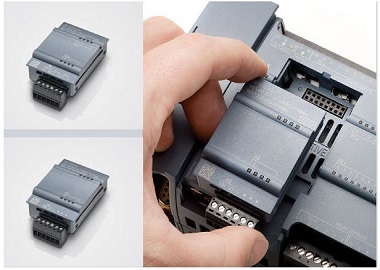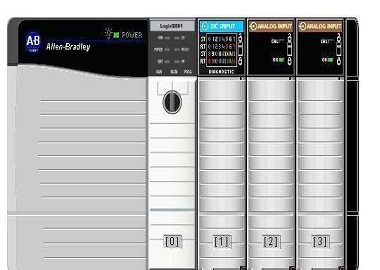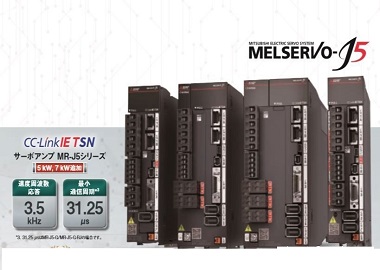
In the past few decades, Ethernet technology has been changing the rules of the industry in various fields, from the early local area network, to the later broadband network, and then to today’s Internet. And now, the key components of Ethernet technology are being used in industrial control fieldbus, driving the evolution and evolution of the entire manufacturing ecosystem.

In fact, for many years, traditional Ethernet technology and TCP/IP protocol have been widely used in the network information system and production operation management system of enterprises and workshops in the manufacturing industry, but they are rarely used in Interaction and communication of actual machine equipment and production line internal control data and information.

The communication between the machine controller itself (such as PLC, IPC… etc.) and its actuators (such as drives, motors…) and sensors always requires the use of a deterministic field control bus. The use of traditional TCP/IP protocol cannot achieve and meet the real-time deterministic requirements from machine control to sensor and actuator communication, so it is not suitable for use as a control layer bus for industrial equipment.

However, in the equipment manufacturing industry, machine manufacturers (such as those manufacturing CNC machine tools, semiconductor equipment…) have seen the value of reusing hardware components based on TCP/IP network settings. Because the explosive growth of the Internet has created a wide range of common technical standards for Ethernet communication components (such as communication cards, cables, connectors…), which greatly reduces the cost of these network interface cards (NIC) and TCP cables , Is only a fraction or even a fraction of the traditional industrial fieldbus cable and data acquisition card (DAQ card). Therefore, compared with the traditional dedicated fieldbus configuration in the industrial field, reusing such Ethernet hardware will help companies save a lot of economic costs.

The economic effect of using Ethernet as a field bus is unquestionable, because Ethernet components can help bring significant system cost reductions, and at the same time have good versatility.

For example, if a proprietary fieldbus is used, the robot manufacturer must purchase a complete set of operational control system components from a single supplier: dedicated I/O cards, servo drives, motors, and expensive cables, connectors… and many more.

Using the standard Ethernet-based communication protocol, the I/O card can be replaced by a general Ethernet interface, and the dedicated bus communication cable can be replaced by a general CAT5 (category 5 twisted pair) cable, and if the network standard can support With multiple suppliers, the cost of the servo drive system will also be significantly reduced.

At the same time, the use of Ethernet to connect equipment system components will also become easier. For example, compared to the use of complex dedicated bus communication cables on equipment controllers and electrical components, the use of general-purpose CAT5 cables similar to those used by home/office computers during networking will make it easier to manage and maintain equipment. And these are only part of the economic benefits brought by Ethernet technology.

The industry quickly realized that although the TCP/UDP/IP protocol cannot provide the real-time deterministic response required by industrial control systems, the ubiquitous and low-cost Ethernet hardware includes: Network Interface Card (NIC) and CAT5 Ethernet Network cables…etc., but can be used in industrial equipment systems to help provide real-time responses required by control applications.

What we need is only a new real-time communication protocol, which can use the hardware physical layer of Ethernet, but at the same time, it can also make the connection and communication between the device controller and all sensors and actuators in the device be available. Real-time certainty.

Since the beginning of this century, major well-known industrial automation manufacturers have successively introduced at least five different real-time industrial Ethernet communication protocols, such as: EtherNet/IP, EtherCAT, PowerLink, ProfiNet and SERCOS III… etc. They are all promoted as “standards”, claiming to be able to reuse the Ethernet protocol or Ethernet hardware, and they all promise to reduce the construction cost of the equipment real-time control system.

The main reason for the emergence of so many “potential standards” is that each company has obviously different technical methods to reuse Ethernet hardware components (such as network interface cards and CAT5 cables). , Which not only greatly reduces equipment costs and improves machine performance, but also enables the transmission and interaction of information and data to support real-time deterministic applications.

There may be another reason for the simultaneous existence of multiple potential “standard” Ethernet protocols. These leading industrial automation manufacturers are trying to use Ethernet technology to save the overall cost of their system solutions. By extending the “standard” of their products to Ethernet, customers can indeed obtain certain advantages and value from Ethernet technology, but in the long run, they are still firmly locked in the manufacturer’s proprietary network .

In addition, the emergence of new protocols can indeed help users use Ethernet technology to break through the existing performance and cost of equipment. At the same time, compared with any other traditional industrial fieldbus, machine manufacturers who adopt the correct real-time Ethernet fieldbus standard will also be able to obtain a very obvious competitive advantage in terms of cost performance.

However, these may not be so important to machine manufacturers and equipment users, because after the promotion and popularization of industrial Ethernet technology and products over the years, the challenges that users are now facing are no longer in traditional industrial control. The choice between bus and industrial Ethernet is in a complex and crowded market, facing the fierce competition between too many industrial Ethernet protocol “standards” and the different values and advantages they each embody. It is difficult to know which “standard” to choose is the right one. If the wrong (inappropriate) protocol is adopted as the standard, it may mean unnecessary cost consumption and sacrifice competitive advantage due to reduced performance.

In various discussions about industrial real-time Ethernet, some seemingly simple facts are often overlooked. The choice of network protocol standard is not only about technical hard specifications and attributes, such as performance and transmission rate… etc.; it should also include some soft indicators and parameters for application experience, such as: ease of use, openness , Independence, risk aversion, consistency, interoperability, long-term availability and system distribution characteristics…and so on, these factors combined together will determine whether the agreement and “standard” can be recognized by users or popularized in the market.

In the following program, we will discuss with you some of the main features of various real-time industrial Ethernet protocols, as well as their possible effects and influences on the integration and application of equipment systems as a field bus of real-time Ethernet.


